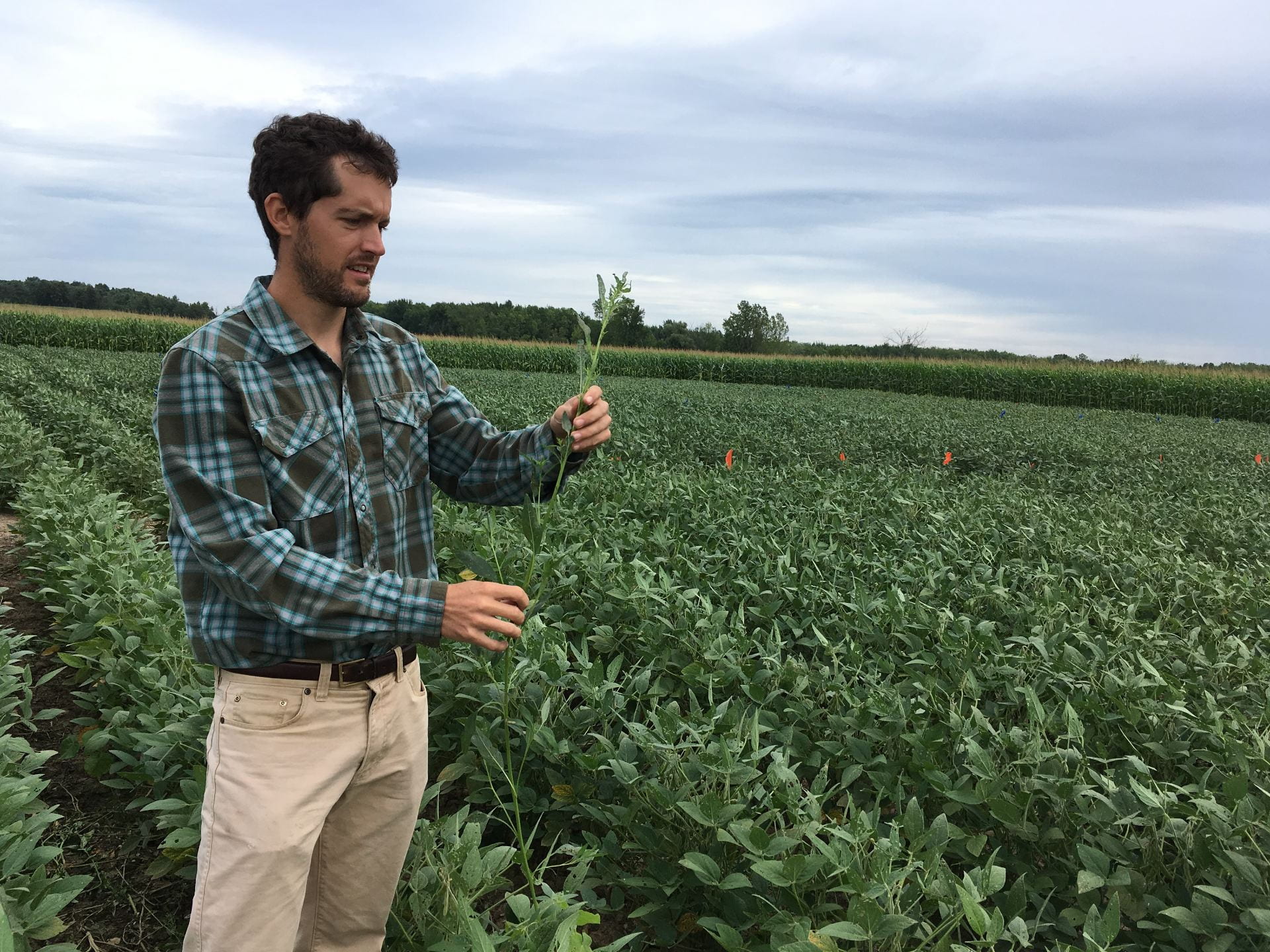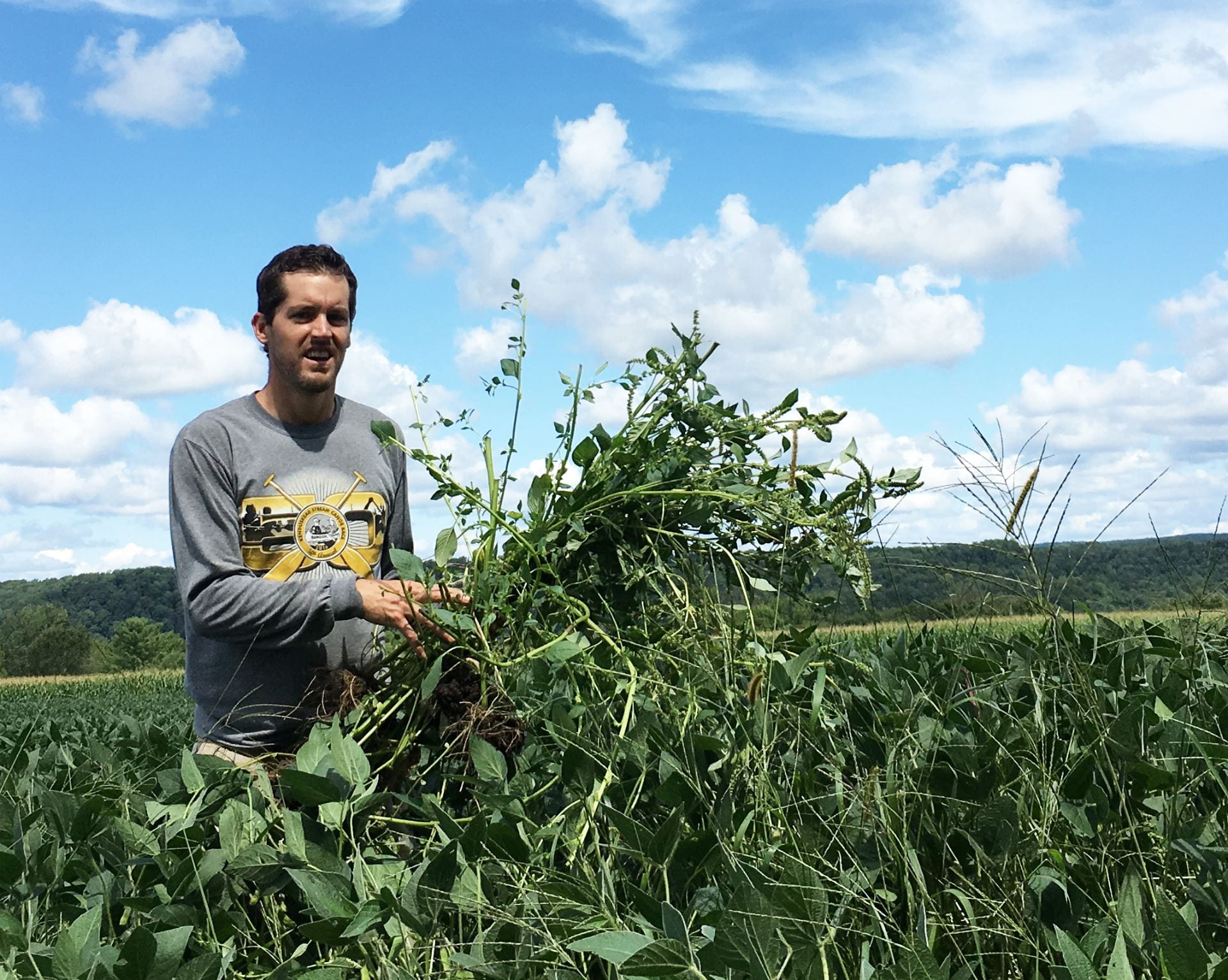
Summer annual weeds start flowering in early August, so it’s important to control them beforehand to prevent seed production. This is true for commercial growers and for homeowners. One of the most prolific is waterhemp, a bane to growers because it’s also resistant to herbicides. According to our INTEGRATED WEED MANAGEMENT SPECIALIST, DR. BRYAN BROWN, waterhemp is likely resistant to herbicide Groups 2, 5, and 9 in NY.

That’s why Bryan is collaborating with growers and researchers around the state to investigate other controls, including cultivation, cover cropping, and even a device that zaps weeds with electricity. Funding for this work was provided by the Farm Viability Institute.
“Here we’re removing waterhemp that survived some of our herbicide treatments in soybeans. Because this trial is done in a grower’s field and we don’t want it to spread, we’re removing it before it sets seed (up to 500,000).”
Soybean grower? Here’s what Bryan and Regional Field Crops Specialist, Mike Hunter explained in their CORNELL FIELD CROPS Blog:
While other pigweed species have short hairs on their stems, waterhemp and Palmer amaranth have smooth stems. The best way to distinguish waterhemp and Palmer amaranth is to rip off one of the lower leaves. Another characteristic of waterhemp and Palmer amaranth is separate male (pollen producing) and female (seed producing) plants. Herbicide resistance traits can transfer by pollen, which has allowed these weeds to develop resistance faster.
To prevent these weeds from taking hold, growers are also recommended to start weed-free with tillage, followed by a 2-pass program of residual and post-emergence herbicides that utilizes several effective sites of action. Foliar applied herbicides should be used when these weeds are less than four inches tall. Since these weeds emerge over a broader timeframe than most weeds, mid-season residual herbicide applications should be considered, along with increased planting density or tighter row spacing to help close the canopy earlier.

If you do find yourself with escapes of these weeds, it makes economic sense to go hand-rogue those weeds out of your fields rather than deal with 200,000 to one million seeds in your soil from each weed. If there are too many to bag up by hand, consider sacrificing that patch of your crop by mowing and tilling the area before the weeds produce seed. Avoid harvesting these areas. Combines are especially good at spreading weed seeds. If you must harvest these areas, know that combines can carry 150 pounds of plant material even you think it’s empty, so check out some of the great online videos on how to clean them out after going through weedy fields.
The weakness of waterhemp and Palmer amaranth is the short lifespan of their seeds in the soil. Of those that don’t germinate, very few will survive in the soil for more than four years. So, if you can keep it under control for four years, you won’t have much of it after that. But as one Pennsylvania grower put it, “the cheapest way to control Palmer amaranth is to never get it in the first place.” So, it’s important to make sure that your seed, feed, bedding, and equipment are clean from the start.

